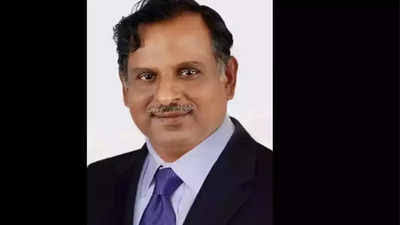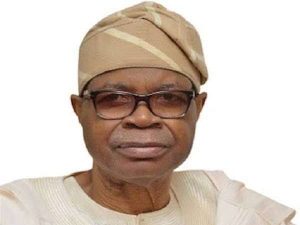
Dr. V Narayanan, an eminent Indian aerospace engineer and rocket technologist, has been appointed as the 11th Chairman of the Indian Space Research Organisation (ISRO), effective January 14, 2025. With a distinguished career spanning over four decades, Dr. Narayanan has been instrumental in advancing India’s space propulsion capabilities, particularly in cryogenic technology.
Early Life and Education
Born in 1964 into a farming family in Melakattuvilai village near Nagercoil in Kanyakumari District, Tamil Nadu, Dr. Narayanan’s early life was marked by modest means. His family did not have electricity until he was in Class IX, yet he excelled academically, eventually topping his school in Class X. He pursued higher education at the prestigious Indian Institute of Technology (IIT) Kharagpur, earning an M.Tech. in Cryogenic Engineering with First Rank in 1989 and later completing his Ph.D. in Aerospace Engineering from the same institution in 2001.
Career
Dr. Narayanan joined ISRO in 1984, initially working in the Solid Propulsion area for Sounding Rockets, Augmented Satellite Launch Vehicles (ASLV), and Polar Satellite Launch Vehicles (PSLV) at the Vikram Sarabhai Space Centre (VSSC). He contributed to process planning, control, and realization of ablative nozzle systems, composite motor cases, and composite igniter cases.
In 1989, after completing his M.Tech., Dr. Narayanan transitioned to the Cryogenic Propulsion area at the Liquid Propulsion Systems Centre (LPSC). He played a crucial role in the development of India’s cryogenic propulsion systems, contributing to the successful development and testing of sub-systems such as gas generators, sub-scale cryogenic engines, and thrust chambers. His efforts were instrumental in making India one of the few countries with indigenous cryogenic propulsion technology.
As the Project Director of the C25 Cryogenic Project, Dr. Narayanan provided techno-managerial leadership in designing and developing the C25 Cryogenic Propulsion System for the GSLV Mk-III Launch Vehicle. Under his guidance, the system was developed in a short time frame and successfully inducted into the GSLV Mk-III vehicle.
In January 2018, he became the Director of LPSC, overseeing the development of liquid, semi-cryogenic, and cryogenic propulsion stages for launch vehicles, as well as chemical and electric propulsion systems for satellites. During his tenure, LPSC delivered 183 liquid propulsion systems for 41 launch vehicles and 31 spacecraft missions over seven years.
Appointment as ISRO Chairman
On January 7, 2025, Dr. V Narayanan was appointed as the Chairman of ISRO, succeeding S. Somanath. He is set to lead the organization during a pivotal time, with ongoing developments in various programs like Gaganyaan, Chandrayaan-4, and the launch of India’s first space station.
Awards and Honors
Dr. Narayanan’s contributions have been recognized with several accolades:
- Silver Medal from IIT Kharagpur for First Rank in M.Tech.
- Gold Medal from the Astronautical Society of India (ASI).
- ASI Award for Rocket and Related Technologies.
He is also a Fellow of the Indian National Academy of Engineering, the Institution of Engineers (India), the Indian Cryogenic Council, and the Aeronautical Society of India.
Birth place
Dr. V Narayanan was born in 1964 in Melakattuvilai village near Nagercoil, located in the Kanyakumari district of Tamil Nadu. This small village, known for its serene landscapes and agrarian community, served as the foundation for his humble beginnings. Despite limited resources, his dedication to education and relentless pursuit of excellence propelled him to great heights in the field of space research.
Net Worth
As of 2025, Dr. V Narayanan’s estimated net worth remains undisclosed. However, his position as a senior scientist and now Chairman of ISRO reflects a distinguished career that commands immense respect and recognition. His contributions to India’s space programs have garnered both national and international acclaim, cementing his legacy as a leader in the field of aerospace engineering.
Conclusion
Dr. V Narayanan’s journey from a modest background to becoming the Chairman of ISRO is a testament to his dedication, expertise, and visionary leadership in aerospace engineering. His pioneering work in cryogenic propulsion has significantly advanced India’s space capabilities, positioning the nation as a formidable player in global space exploration.
FAQs
1. Who is Dr. V Narayanan?
Dr. V Narayanan is an Indian aerospace engineer and rocket technologist, appointed as the 11th Chairman of ISRO, effective January 14, 2025.
2. What is Dr. Narayanan’s educational background?
He earned an M.Tech. in Cryogenic Engineering with First Rank in 1989 and a Ph.D. in Aerospace Engineering in 2001, both from IIT Kharagpur.
3. When did Dr. Narayanan join ISRO?
He joined ISRO in 1984, initially working in the Solid Propulsion area at the Vikram Sarabhai Space Centre (VSSC).
4. What are Dr. Narayanan’s significant contributions to ISRO?
He played a pivotal role in developing India’s indigenous cryogenic propulsion technology and led the C25 Cryogenic Project for the GSLV Mk-III Launch Vehicle.
5. What positions has Dr. Narayanan held at ISRO?
He has served as the Director of the Liquid Propulsion Systems Centre (LPSC) since January 2018 and was appointed Chairman of ISRO in January 2025.
6. What awards has Dr. Narayanan received?
He has received the Silver Medal from IIT Kharagpur, the Gold Medal from the Astronautical Society of India (ASI), and the ASI Award for Rocket and Related Technologies. He is also a Fellow of several prestigious engineering and aeronautical societies.
7. What role did Dr. Narayanan play in India’s cryogenic propulsion?
Dr. Narayanan spearheaded the development of India’s indigenous cryogenic propulsion systems, which are crucial for launching heavier payloads into space. His leadership in the C25 Cryogenic Project has been particularly noteworthy.
8. What is cryogenic propulsion, and why is it important?
Cryogenic propulsion involves using cryogenic fuels, such as liquid hydrogen and liquid oxygen, at extremely low temperatures. This technology is vital for launching heavy satellites into higher orbits and for interplanetary missions.
9. What challenges did Dr. Narayanan face during his career?
Coming from a modest background, Dr. Narayanan faced financial and infrastructural challenges in his early life. In his professional career, he overcame the technical and logistical difficulties of developing indigenous cryogenic technology for ISRO.
10. What are Dr. Narayanan’s future plans as ISRO Chairman?
As ISRO Chairman, Dr. Narayanan aims to focus on critical projects such as the Gaganyaan human spaceflight mission, the development of India’s first space station, and upcoming lunar and planetary exploration missions.





